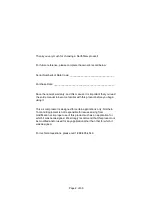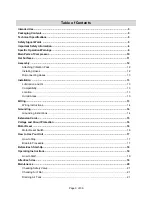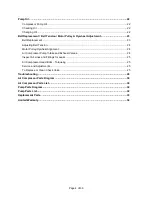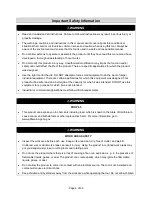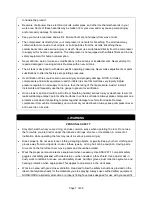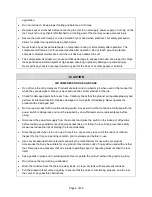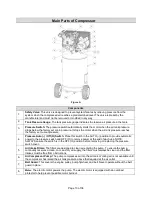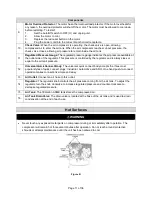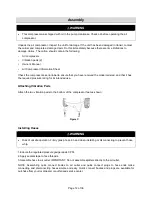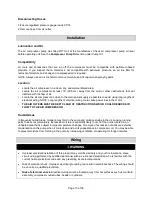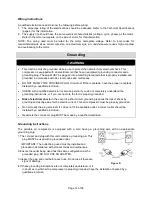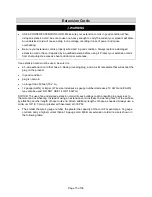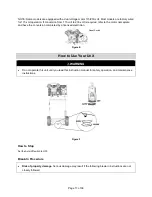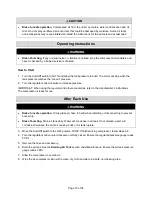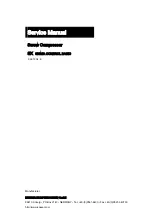
Page 7 of 36
to handle the product.
•
Be aware of all power lines, electrical circuits, water pipes, and other mechanical hazards in your
work area. Some of these hazards may be hidden from your view and may cause personal injury
and/or property damage if contacted.
•
Keep your work area clean and well lit. Ensure floors are not slippery from wax or dust.
•
The compressed air directly from your compressor is not safe for breathing. The air stream may
contain carbon monoxide, toxic vapors, or solid particles from the air tank. Breathing these
contaminants can cause serious injury or death. Never use air obtained directly from the compressor
to supply air for human consumption. The compressor is not equipped with suitable filters and in-line
safety equipment for human consumption.
•
Never drill into, weld or make any modifications to the air tank or its attachments. Never attempt to
repair a damaged or leaking air tank. Replace with a new air tank.
•
The air tank is designed to withstand specific operating pressures. Never make adjustments or parts
substitutions to alter the factory set operating pressures.
•
Over inflation of tires could result in serious injury and property damage. NOTE: Air tanks,
compressors and similar equipment used to inflate tires can fill small tires very rapidly. Adjust
pressure regulator on air supply to no more than the rating of the tire pressure. Add air in small
increments and frequently use the tire gauge to prevent over inflation.
•
Oil can leak or spill and could result in fire or breathing hazard; serious injury or death can result. Oil
leaks will damage carpet, paint or other surfaces in vehicles or trailers. Always place compressor on a
protective mat when transporting to protect against damage to vehicle from leaks. Remove
compressor from vehicle immediately upon arrival at your destination. Always keep compressor level
and never lie on its side.
⚠
WARNING
PERSONAL SAFETY
•
Stay alert, watch what you are doing, and use common sense when operating the tool. Do not use
the tool while you are tired or under the influence of drugs, alcohol, or medication. A moment of
inattention while operating the tool may result in serious personal injury.
•
Dress properly. Do not wear loose clothing, dangling objects, or jewelry. Keep your hair, clothing and
gloves away from moving parts. Loose clothes, jewelry, or long hair can be caught in moving parts.
Air vents on the tool often cover moving parts and should be avoided.
•
Wear the proper personal protective equipment when necessary. Use ANSI Z87.1 compliant safety
goggles (not safety glasses) with side shields, or when needed, a face shield. Use a dust mask in
dusty work conditions. Also use non-skid safety shoes, hardhat, gloves, dust collection systems, and
hearing protection when appropriate. This applies to all persons in the work area.
•
Work in an area with good cross ventilation. Read and follow the safety instructions provided on the
label or safety data sheets for the materials you are spraying. Always use certified safety equipment:
NIOSH/OSHA respiratory protection or properly fitting face mask designed for use with your specific


